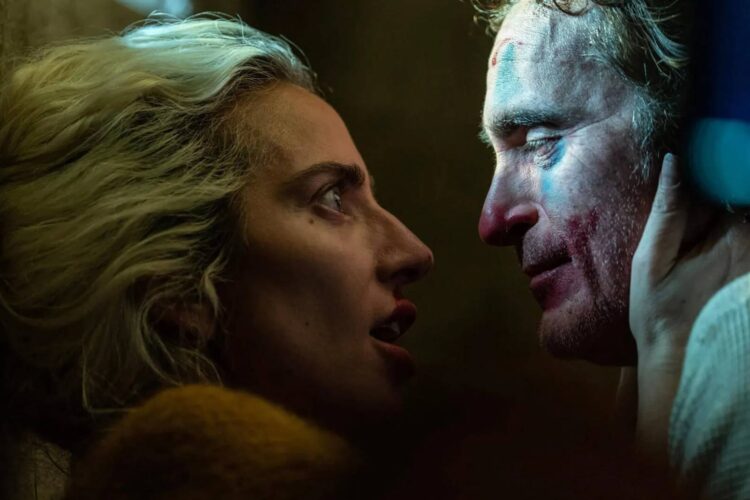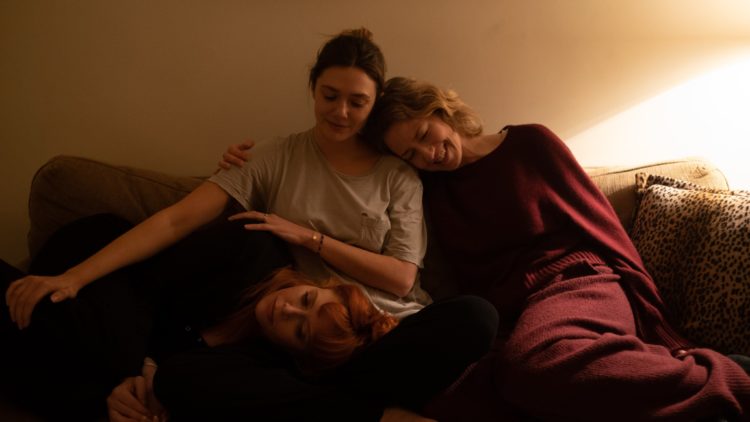

In a twist for the ages, the greatest joke of Todd Phillips’ Joker sequel––which contains far fewer punchlines than the first, regardless of how they land––is the movie itself. Not in craft, but the film’s holistic departure from its predecessor. After an explosive response, Phillips and co-writer Scott Silver knew exactly what chaos people would be expecting from a prison-liberated Joker in round two, and they played to it. Joker: Folie à Deux is a prank on incels and anarchists everywhere, a dark, soft, sing-songy dismemberment of the very concept of the Joker that roused fandom to begin with.
This time, Phillips doesn’t risk misinterpretation. He’s less interested in commenting on society than in cooling down society’s temper. The twist of this sequel isn’t just a left turn but a franchise reversal, almost as if to take it all back––a betrayal. It’s a gutting response to the nihilistic counterculture that missed the first film’s more complex points and found its voice in the villainous shadow-side of Arthur Fleck.
Folie à Deux is a movie tailored to its expectations, yes. But the Joker’s trick is that it rejects them, a bravado move from Phillips that’s sure to hemorrhage his fan base. It’s not that the film is so crazy that you have to see it (in fact, what’s crazy about it is that it isn’t); rather that few have ever had a platform like Philips and Joaquin Phoenix to fool with expectations of the masses so blatantly. How they did it is something worth seeing. As the tagline ruses, “The world is a stage,” and Folie à Deux knows it’s on it.
With such speculation and expectation in the air (and such standard filmmaking chops on display), one of Folie à Deux‘s joys is the gradual discovery of its plot; I’ll leave that mostly eschewed. The basic synopsis goes like this: Arthur, coming up on his murder(s) trial, is holed up in Arkham State Prison. His lawyer Maryanne (Catherine Keener) preps him for the hearing and works to deem him insane in an attempt to get him off the hook. Meanwhile, the jolly-violent prison guards (Brendan Gleeson lead among them) keep Arthur in check.
Fleck, unlike Joker, is gentle, obedient, quiet, and defeated––a wounded puppy. Everyone talks about the TV movie they made about him, which apparently features the staircase. In other words: the same hype that developed over the half-decade since Joker’s release developed in-universe between movies. The guards like him enough to sign him up for a prison music class, much to his pleasure. It’s there that he meets the love of his life, Harley Quinzel (Lady Gaga), and begins imagining a future for himself again. The rest revolves around their connection what’s deemed the “Trial of the Century,” one of the first televised trials in Gotham history.
The only other spoiler-free element that can’t go unmentioned is the music. As the official logline states, Arthur “finds the music that’s always been inside him.” But it’s not the music you’re thinking of. Folie à Deux is a full-blown musical––a strange, downbeat, showtunes-y, sad trumpet-wailing, smokey lounge-sounding, Gene Kelly-kicking, at one point even Busby Berkeley-designed musical. Moreover, a jukebox musical (not the vapid kind currently clogging Broadway).
On the other side of the music, the dark side, Hildur Guðnadóttir’s grave-deep, cello-sawing score is heavy enough to throw your back out, lurking in the shadows of every romantic tune or nice moment. The shadow-side of things is a prominent theme and frontline narrative in Folie à Deux. The film’s title is clever as a reference to the sequel identity and the addition of Gaga/Quinn, but what it really refers to is the duality of self on display––Fleck’s insistence that he is good and Joker (his shadow) is essentially his Gollum. The movie opens with the shadow concept outright.
It begins with a classic Warner Bros. Looney Tune, but there aren’t any familiar faces. Just Joker… in “Me and My Shadow!” This animated segment plays out (more or less) the final act of the first film in glitzy, goofy, cartoonish fashion. All the while, Joker is split into two characters acting against each other: himself and his literal shadow. They drag each other around, work together, beat each other up, etc. Like the rest of Folie à Deux, it gets a bit boring, but––one of the film’s strong suits––it ultimately leaves one to wonder.
Folie à Deux is a slow burn to the finish and a marked, whimpering end to the Joker franchise under Phillips and Phoenix. Joker, the villain, is hardly in it. There isn’t a real scene with him in costume for over eighty minutes. Arthur Fleck has reclaimed the story. Phillips, on the other hand, refuses to let the real-life metaphor go far enough to need reclaiming.
In one sense, it makes for a tamer movie. But it also makes for a wildly unexpected series of choices for the most anticipated comic book movie of the year, which is a sigh of relief, a welcomed change, a peacemaker. It’s an impressive feat when you consider the strength and contrast between the two, each sturdy and worthwhile in their own shape.
One can’t help noticing how marketing’s worked to undermine the new mood of this film, tacking a bone-chilling clip of Harley and Arthur whisper-singing “get ready for the judgment day” onto trailer’s end with a smirk. But it’s a misdirect as intentional as the franchise upheaval itself.
To drive the good-hearted sincerity that runs through Folie à Deux home, a hushed Phoenix sings Daniel Johnston’s “True Love Will Find You in the End” over the credits, as if to soften the blow and send a message of hope to those who want to rage when they learn what Phillips has done to their beloved icon of anarchy. No more blowing up the system, no more vague far-right inspiration. Just a plea not to give up, an encouragement that love will eventually be found.
Joker: Folie à Deux premiered at the Venice Film Festival and opens on October 4.
The post Venice Review: Joker: Folie à Deux Pulls a Prank on Incels and Anarchists Everywhere first appeared on The Film Stage.



